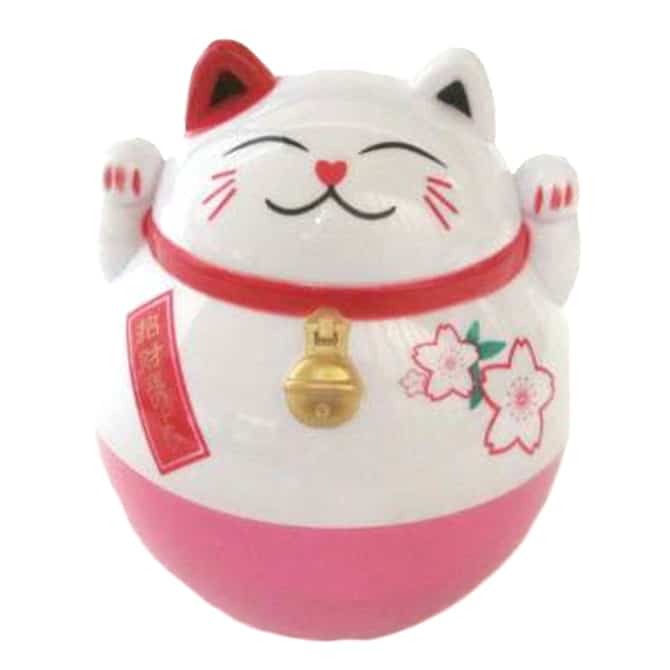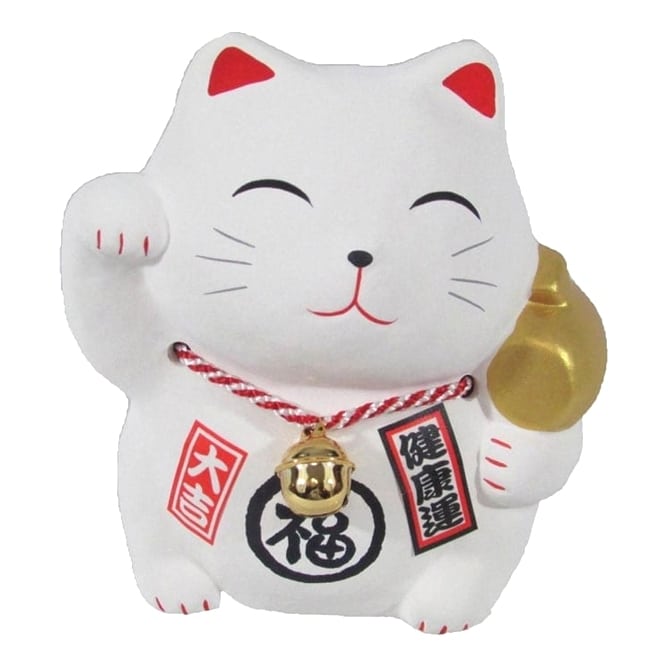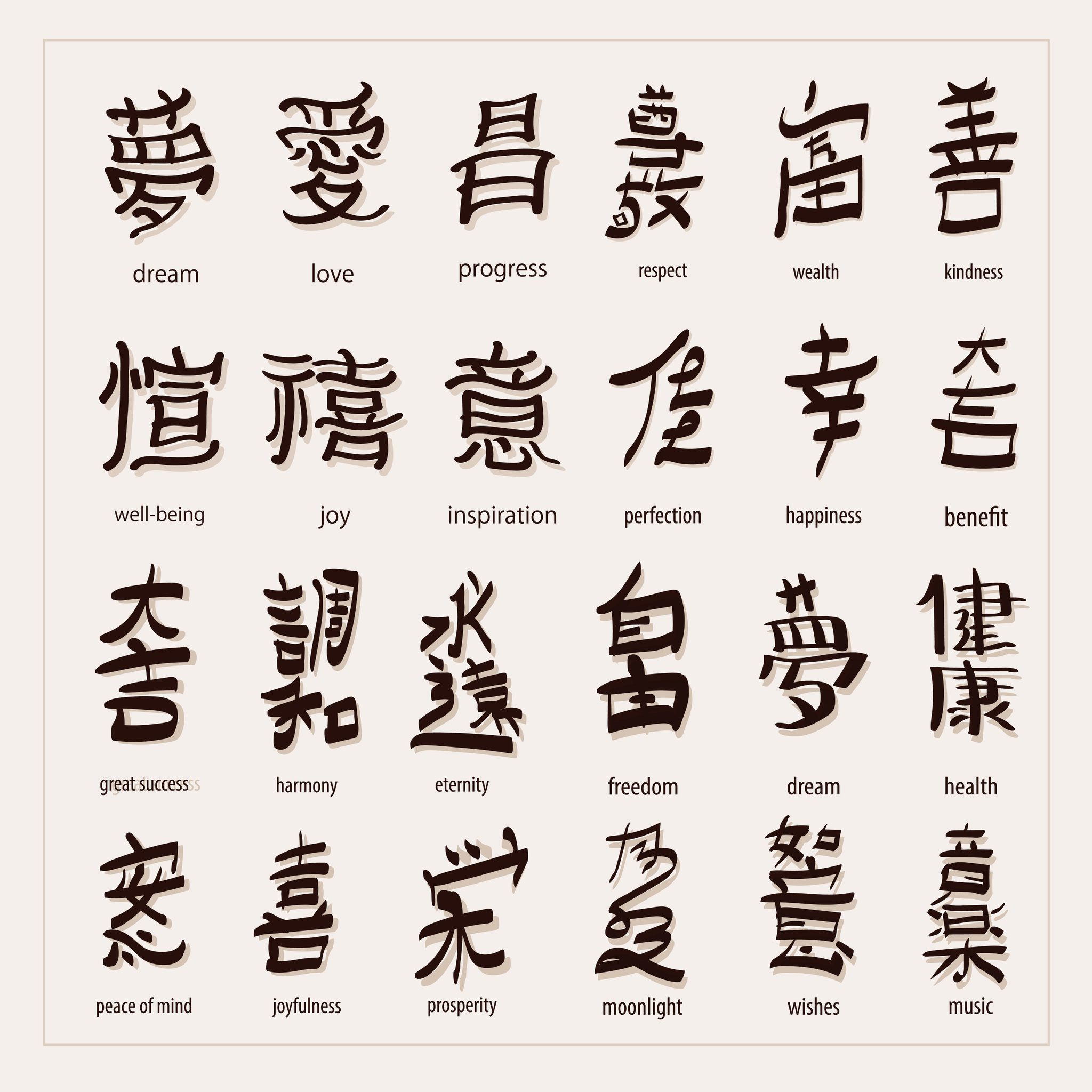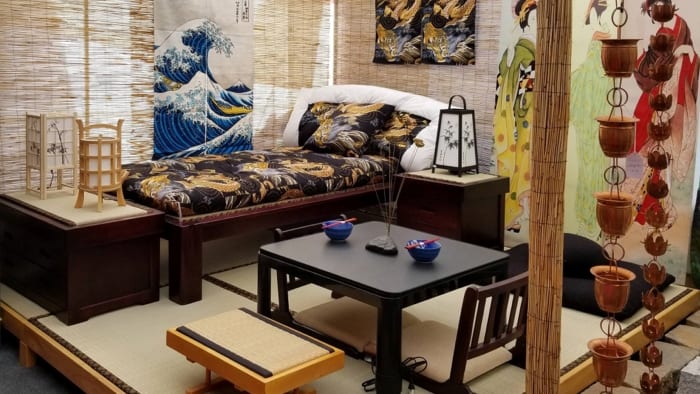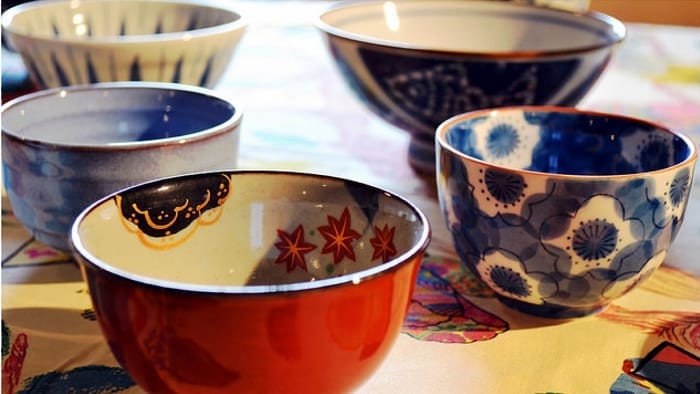While it is believed that Maneki Neko (literally “Lucky Cat”) first appeared during the later part of the Edo period (1603–1867), the earliest documentary evidence of Lucky Cat comes from the 1870s. It was first mentioned in a newspaper article in 1876, and kimono-clad Maneki Neko were distributed at a shrine in Osaka during this time. An ad from 1902 advertising Maneki Neko indicates that by the turn of the century they were popular. Several legends have told of a humble cat who saves a companion or noble passerby from danger, and as a result, the Japanese consider cats to be wise and lucky spirits. Many shrines and homes include the Maneki Neko, a figurine of a cat with one paw upraised as if waving. These statues are also referred to as Kami Neko (“god cat”), in reference to the cat’s divine spirit.
Others have noted the similarities between the Maneki Neko’s gesture and that of a cat washing its face. An old Japanese wives’ tale says that a cat washing its face means a visitor will soon arrive. This saying may, in turn, be related to an even older Chinese proverb that states that if a cat washes its face, it will rain. Thus it is possible a belief arose that a figure of a cat washing its face would bring in customers fleeing the rain to the nearest shop.
Legends and stories of Lucky Cat
Maneki Neko derives from many legends, but there are three that are most common.
The Temple Cat: A wealthy feudal lord, often said to be an emperor or high-ranking military commander, took shelter from a storm under a tree near Gotoku-Ji Temple. The noble saw the temple priest’s cat waving a paw to him, and he decided to follow the cat into the temple. That instant, the tree was struck by lightning and fell where he had been sitting only seconds before. Though the temple was small and the priest poor, the lord and priest became fast friends, and the temple soon prospered. When the cat died, supposedly the first Maneki Neko was made in his honor.
The Courtesan: A courtesan named Usugumo lived in Yoshiwara with her beloved pet cat. One night, the cat began tugging at her kimono. And no matter what she did, it followed her around the brothel and wouldn’t leave her be. The brothel’s owner saw this and, believing the cat to be cursed, cut its head off. The cat’s head flew to the ceiling and killed a venomous snake. It had coiled in the rafters, waiting to strike. Usugumo was devastated by the death of her companion. So to cheer her up, one of her customers made her a wooden statue of the cat as a gift. The statue then became popular as the Maneki Neko.
The Old Woman
The Old Woman. A destitute old woman living in Imado was forced to sell her cat so that she wouldn’t starve. Afterward, the cat appeared to her in a dream, instructing her to make a statue of itself out of clay. She did as instructed. Making a cat with a raised paw, and soon afterward sold the statue for a handsome sum of money. Others soon heard of her artistry, and the cat statues became popular and made the once poor woman a fortune. Her statues were the first Maneki Neko.
View our selection of lucky cat favors and statues. They make the perfect gift!

